Concept Clinic: Results From Our First Experiment
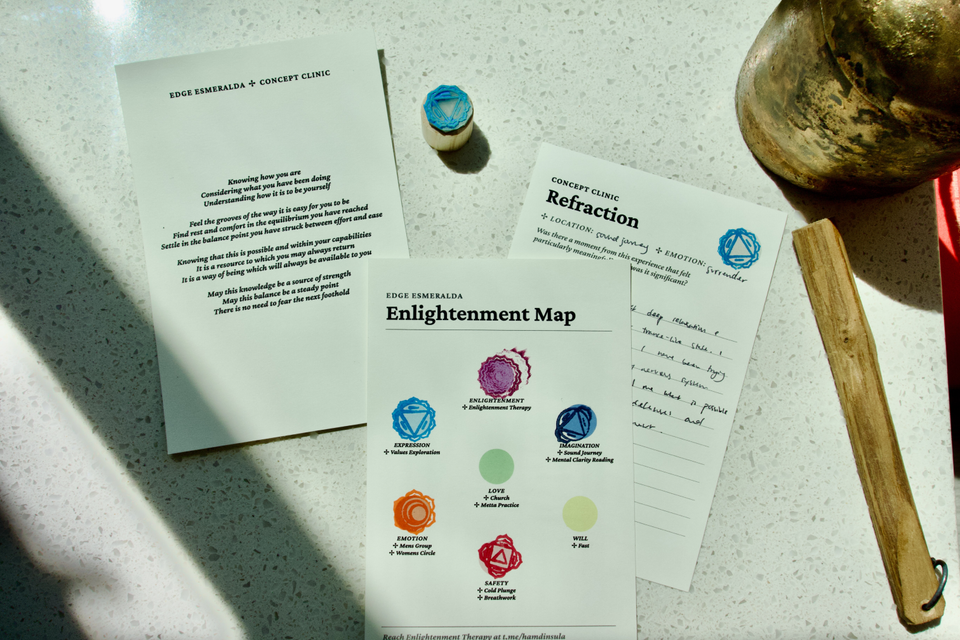
This June I stayed in Healdsburg, CA for a month for the Edge Esmeralda pop-up village. While my visit to Vitalia in January was for anthropological purposes, at Edge Esmeralda I had an experiment to run: a pop-up clinic for this pop-up village.
The Edge City team, which puts on these long-form events, had seen my Vitalia writeup and asked me if I’d do something related to mental health at Esmeralda. This turned into the idea of running my own clinic there. As I’ve been researching and experimenting with different types of wellness spaces and modalities, this was a great opportunity to try building my own. I wanted to find out what kinds of modalities play well together, and how it feels to embed behavioral health services in a community setting. My ultimate goal is to open up my own clinical spaces and to help others do the same. The Concept Clinic at Edge Emseralda was my first experiment in this direction.
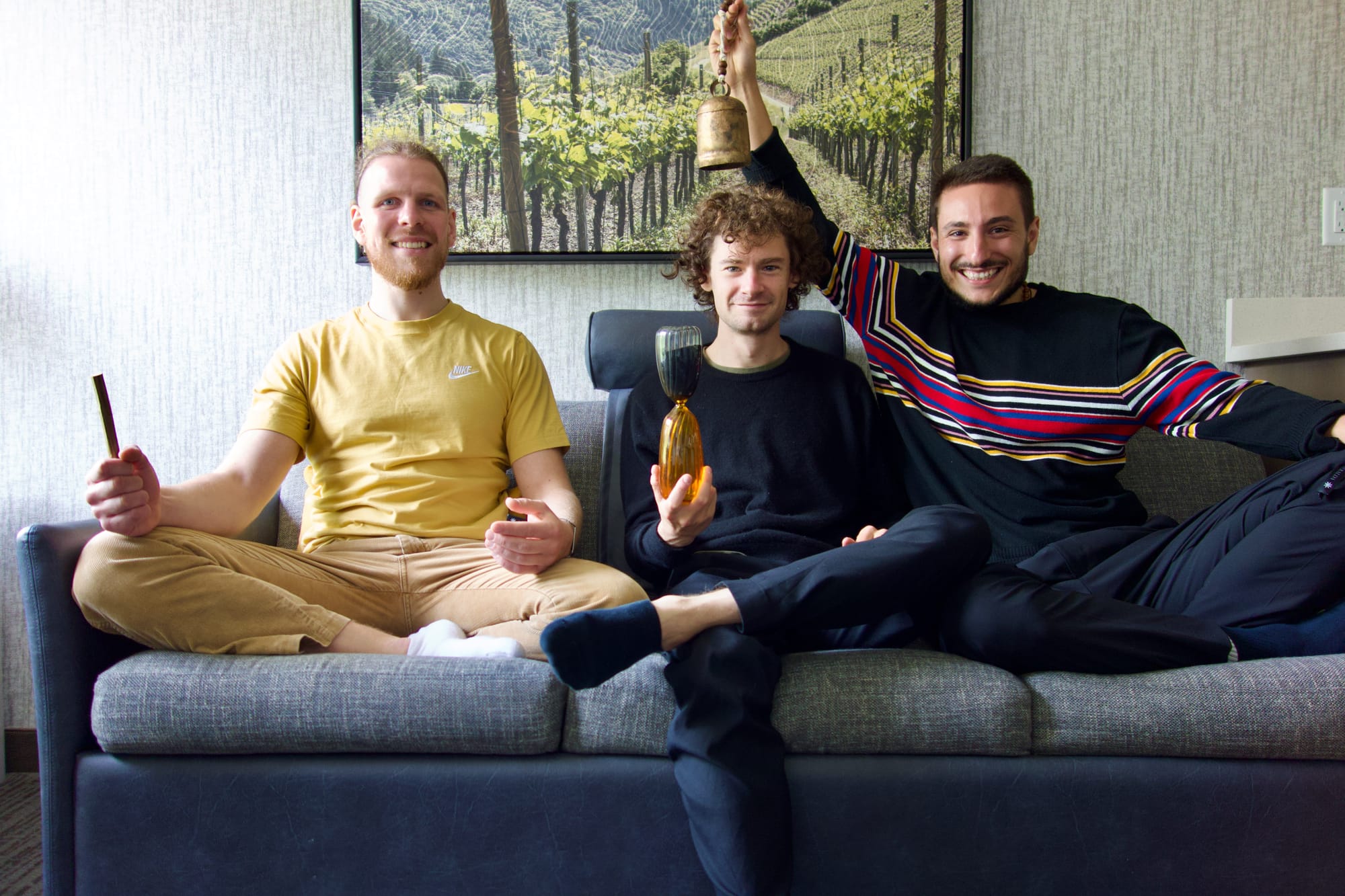
One of my clinical design interests is interprofessional or collaborative practice—when different practitioners share information about a client towards the common goal of healing, or even working with clients together in the same session. I’m curious what kinds of modalities and frameworks work well together, so I wanted to bring multiple types of practitioner under one concept at Esmeralda.
The main interventions we hosted at the Concept Clinic were:
- Ongoing talk therapy services, in the Enlightenment Therapy approach
- Weekly men’s work and women’s work groups
- A somatic sound journey workshop
- An intellectual unconference on social wellness
The heart of the Concept Clinic was Enlightenment Therapy, a novel psychology practice created by Hamdin Sula and Johnathan Heppner. Hamdin and Johnny were my two main collaborators for planning the whole thing. I met the two of them earlier this year at Vitalia and found their approach to psychology very interesting. They're both philosophers of psychology as well as practicing psychologists, and they infuse their work with ideas from Western and Eastern philosophical traditions. I started working with them since February and found their approach refreshing and helpful, so when the opportunity to do a pop-up clinic came around I asked them to join me.
For the men’s work groups, I invited my friend Johnny Bowman, an experienced men’s group leader and advocate. He did a fantastic job introducing people to men’s work, and attendees of the first group carried on the group without him for subsequent weeks. We had many talented women’s circle leaders from week to week at Esmeralda: Kelly Wilde Miller led our first group, then Janine Mares from the Edge City team, and Zelda Poem each led a group. Finally, we brought Olo, the practice of somatic practitioner Catarina Brazao and sound designer Markus Pesonen. The two of them have been running sound journeys in clinical and entertainment spaces for the last ten years, and I like their practice.
There were also practitioners at Esmeralda unaffiliated with us who offered other modalities, from circling to dance to relationship mapping. We just focused on the modalities and philosophies we knew best, and on bringing a higher level of coordination and polish across our interventions. But we enjoyed contributing to other events, from meditations and morning sauna sessions to Ellie Hain’s values exploration workshop.
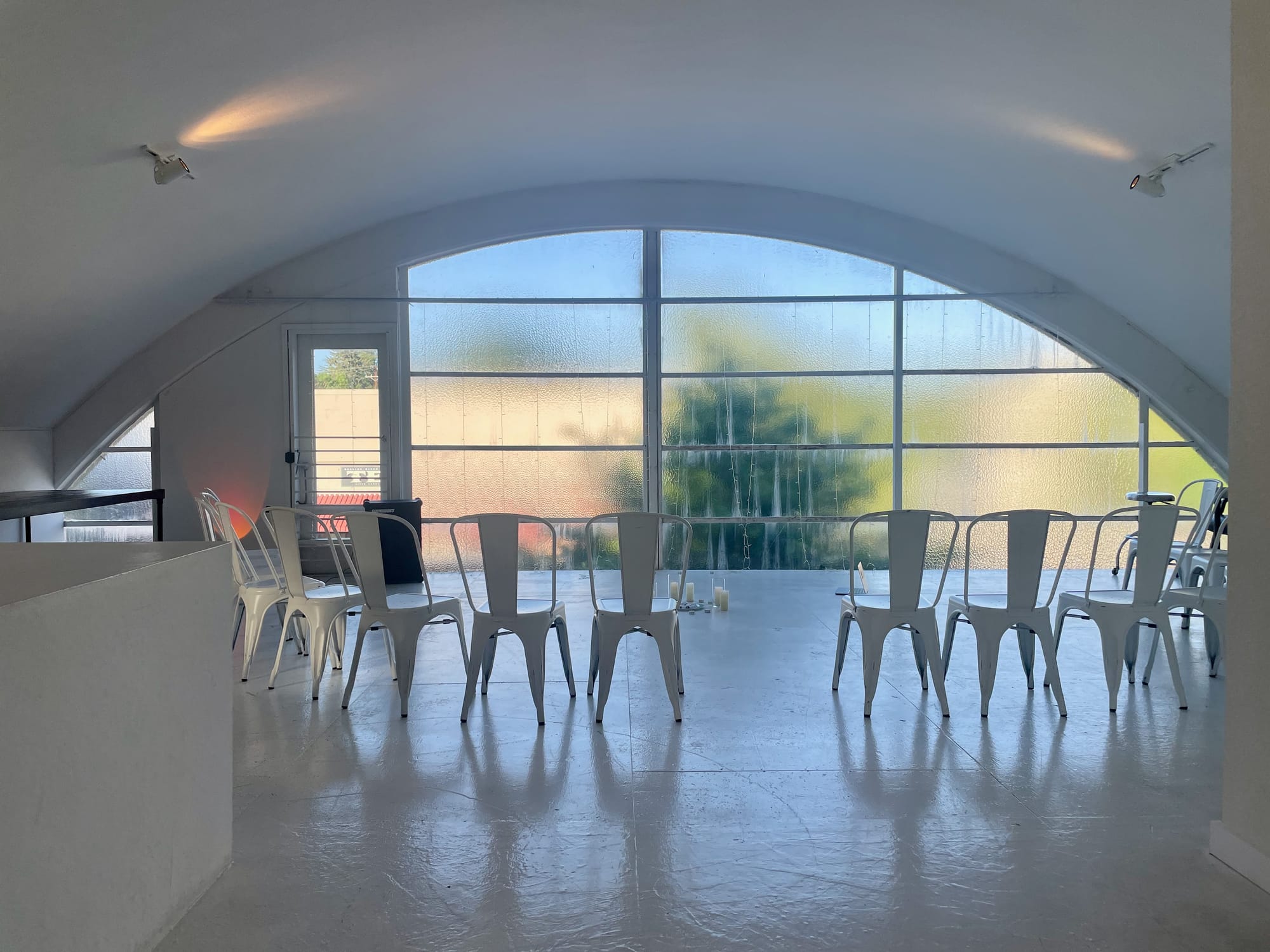
The Concept
Because of Johnny and Hamdin’s Enlightenment Therapy practice, we themed our clinic around light. I had already invited several practitioners, and my original idea was to have people able to visit different physical resources located across town. Therapy services, the sauna and cold plunge, a church, and workshops in more of a yoga studio type of space would all be places where inner resources can be developed. Johnny and Hamdin then came up with the idea of relating this to the color spectrum and the chakra system.
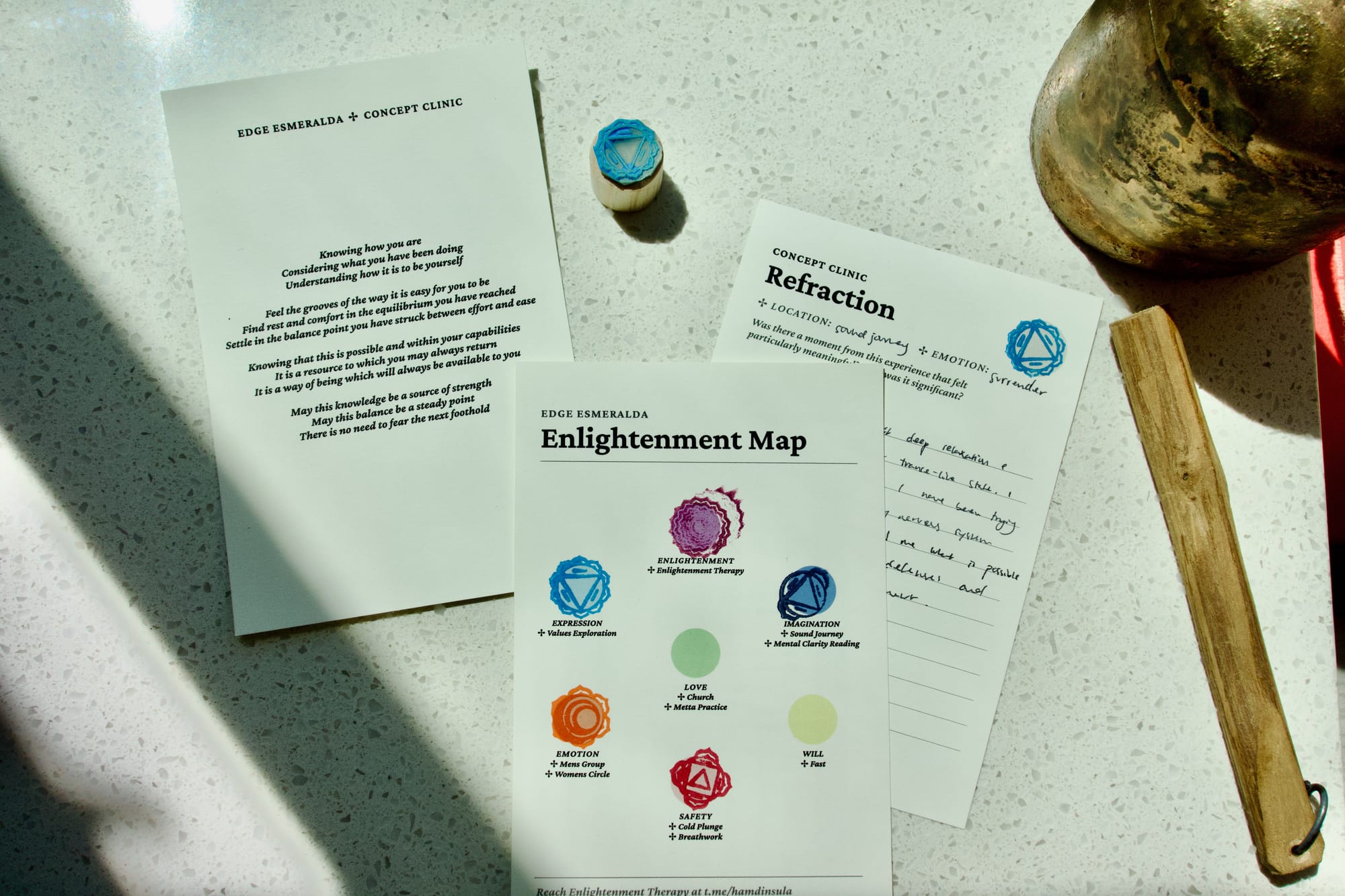
Starting from the theme of collaborative practice, we thought about the different emotions and regulatory systems of the body. Different modalities work on different parts of the emotional “spectrum,” and therapies are specialized in different effects and levels. The chakra system is one way to describe this. “Chakra” means wheel, referring to the different cycles in the body, including the cardiovascular, endocrine, and energetic cycles. We wanted to think of these as “frequencies,” so we designed our concept around light frequencies to get this across. Safety, the red chakra, corresponded to breathwork and the sauna, modalities that affect the autonomic nervous system; while related imagination mapped to the sound journey and the dark blue chakra of the intellect. The purple crown chakra, of course, was Enlightenment Therapy. Here people could bring the “Refractions” they obtained at other modalities and integrate their learnings.
Another reason we used the enlightenment theme is that the spiritual, meaningful element of self-work is a core part of Johnny and Hamdin’s philosophy. Johnny and Hamdin want to overcome the materialist, deterministic view of contemporary psychology and create a paradigm where meaning and experience are first class citizens. This tracks with how I view psychology—as an essentially interpretative practice. The three of us agree that healing is much more effective when the meaningful and spiritual elements are brought into play. Theming around “enlightenment” was a novel cue for our clients to think about meaning in their own lives.
Execution
We ended up having to run Enlightenment Therapy out of my hotel room. It wasn’t ideal, but luckily I've been traveling with a bunch of cute items, so we were able to transform the room into a calm and homey place. The bell, a Christmas gift from my parents last year, was a key element. We used it at the beginning and end of every session to demarcate our relationship as Edge Citizens from our full focus on the client in a session.
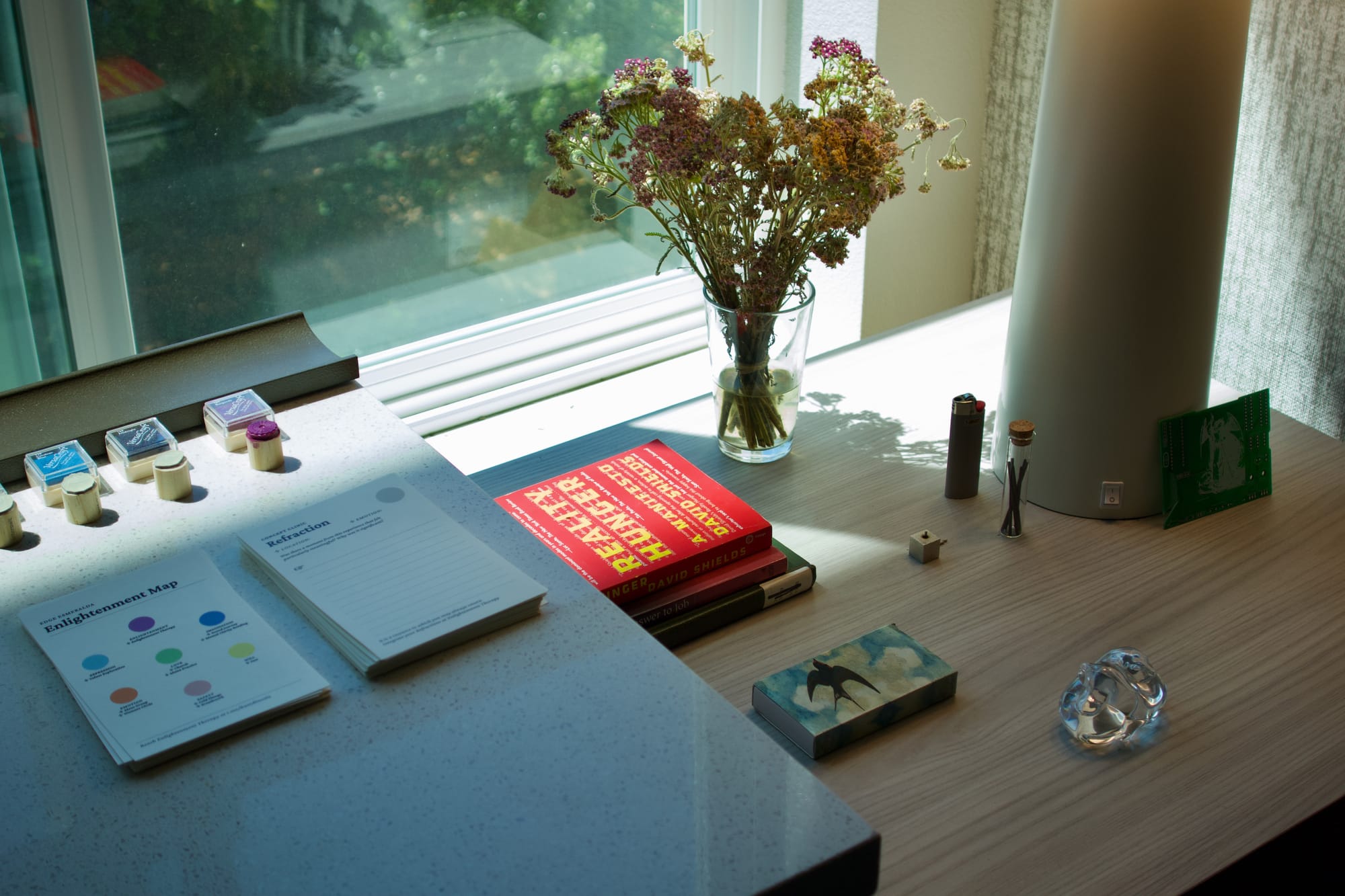
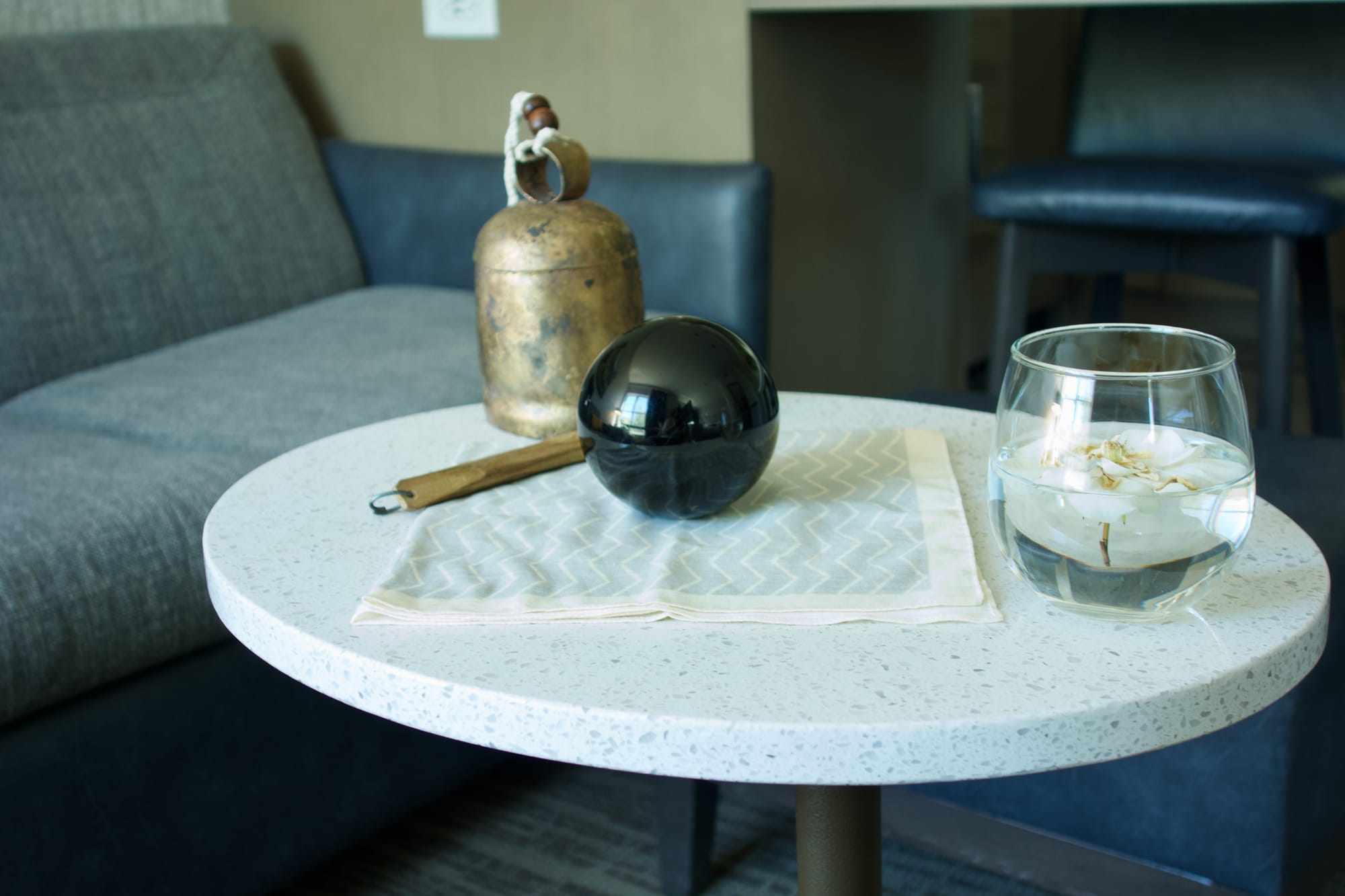
Enlightenment Therapy was definitely the main event of the clinic, and when word got out about these two “non-dual therapists” we had a lot of interest. I actually had to step in as one of the therapists about half the time, pairing with Johnny or Hamdin, in order to meet demand. Despite our best efforts to schedule things via Telegram, people kept trying to drop in for impromptu therapy sessions—something we’ll have to fix in future iterations. But it felt good that people were excited about the offering and spreading the word about our work. We ended up seeing between 40 and 50 unique clients over the course of the month—about 5% of the total Edge City population.
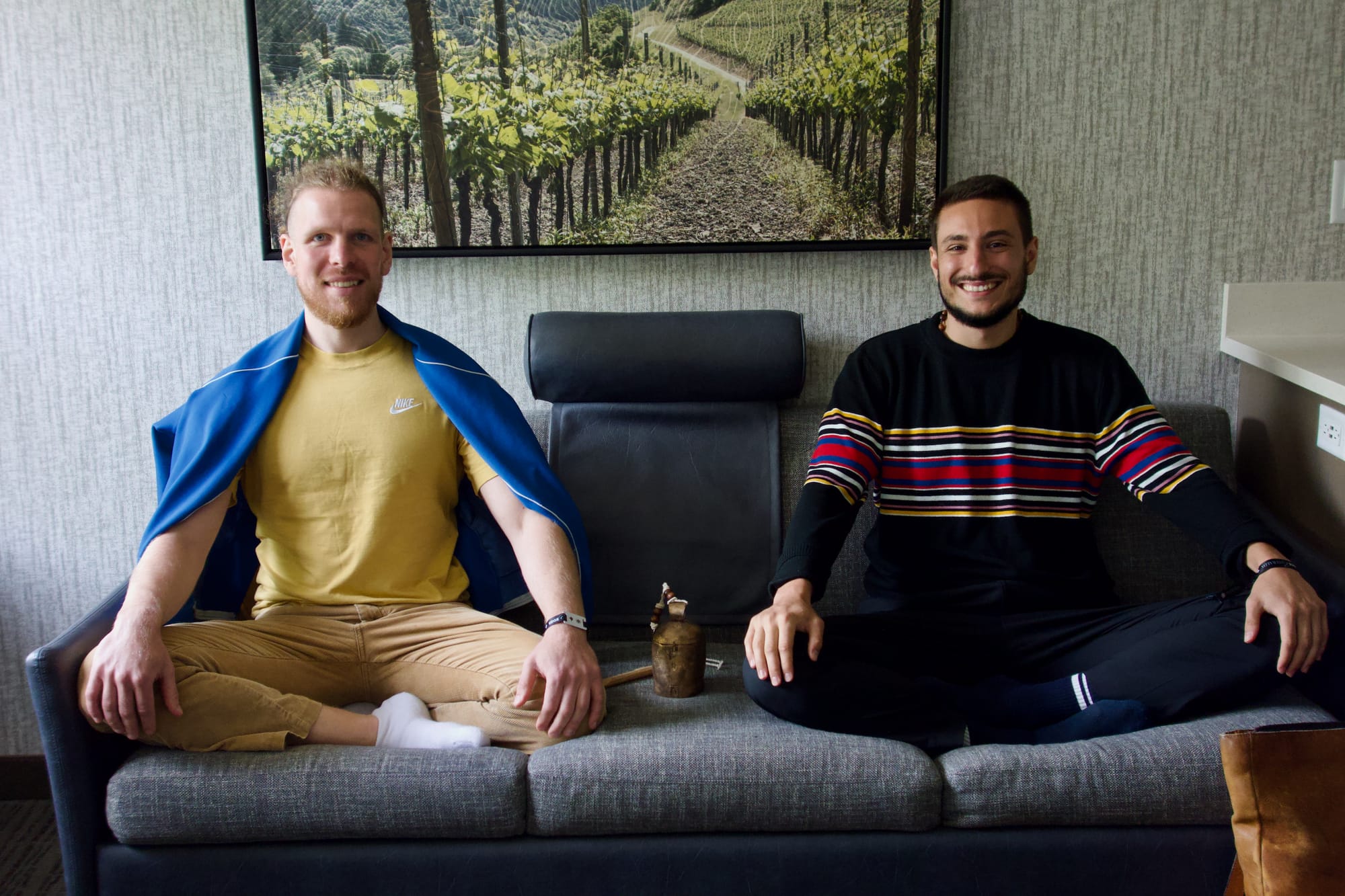
Because the three of us couldn't all be physically attendant at every intervention, they felt like more of a disparate collection of things rather than one physically integrated clinic. There was some variability in the men’s and women’s groups because they were run by different people every week; in future versions, we want to have more handholding and direct facilitation. Still, we noticed thematic circulation between the modalities. People would frequently come to the therapy session with thoughts or feelings they noticed in their men’s or women’s group to work on further. This is just what we hoped would happen, and something we want to encourage more in future clinic designs.
Our Next Clinic
Outside of our clinic, Edge Esmeralda was a lot of fun. It was successful at curating very interesting and highly talented people, from computer chip printers to nuclear fusion experts to cryptography researchers. I really appreciated the efforts the Edge City team made to integrate into the local city through food and programming. Vivek Singh’s augmented locality project was particularly great at deepening participants’ relationship to the local space, and we were proud that a bunch of Healdsburg residents visited our various clinical interventions.
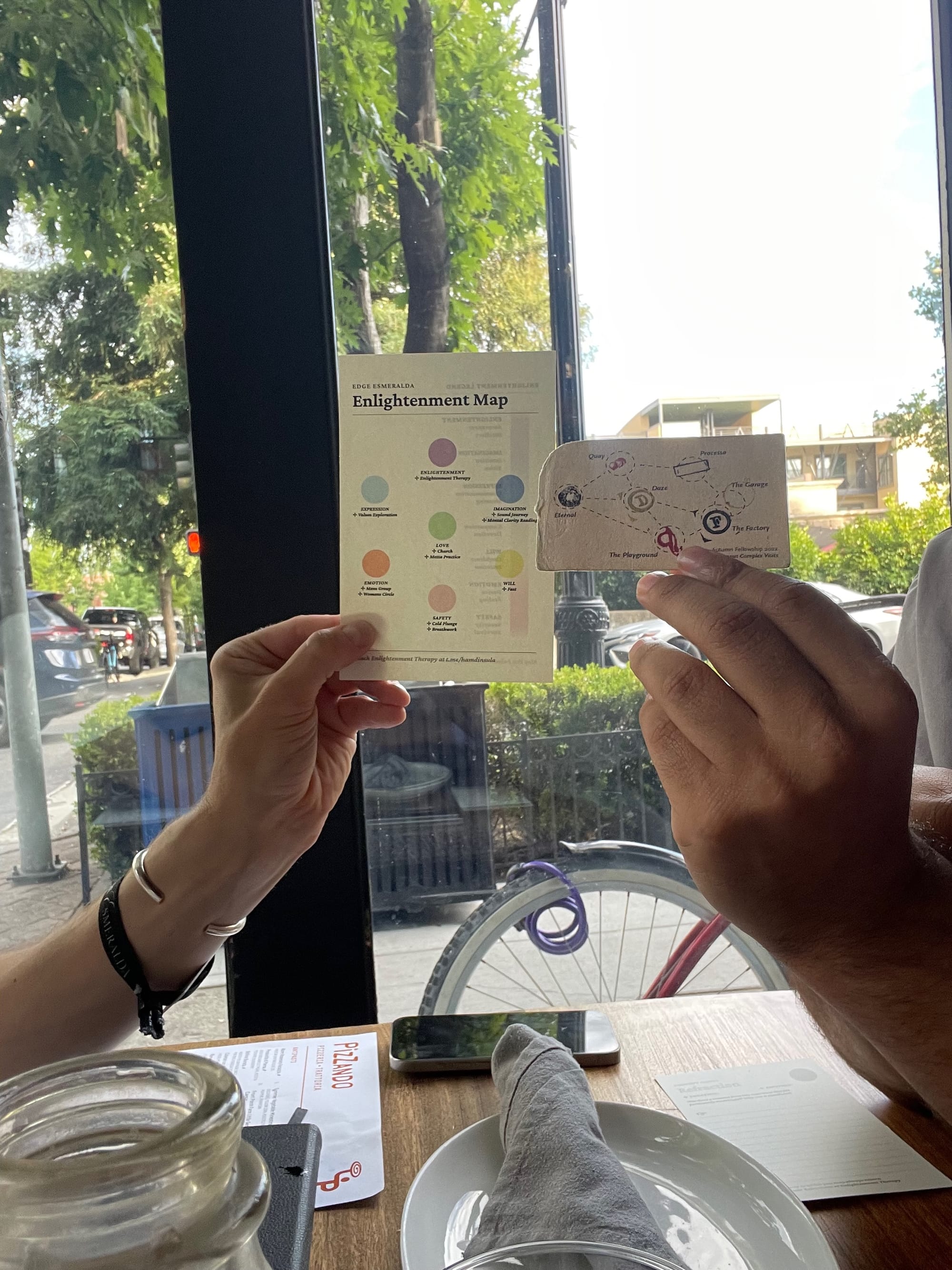
This was my first time designing in the medium of clinical or healing space. Despite it being a very small trial, I learned a lot about the logistics of running a clinical organization in a community setting. Between therapy sessions, men’s groups, women’s groups, and the sound journey, between 150 and 200 people visited our clinic over the month.
If you’re a mental health practitioner or group leader interested in what we’re doing here, reach out—I’d love to invite you to future pop-up cities. We’re already experimenting with more concept clinics; we received a small grant to visit Vitalia again, and we’d like to do another version at Edge City Lanna in Chiang Mai. These are great opportunities to share our unique psychiatric theories, practices, and philosophies with an audience that is genuinely open and interested in exploring.
Lastly, the three of us are currently exploring what it would look like to create a physical Concept Clinic in a more permanent place, likely in San Francisco. I’m learning about integrative clinic building, operations, and financing. If this is something you know about, please write me.
Member discussion